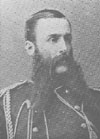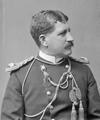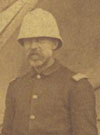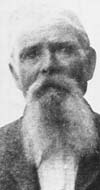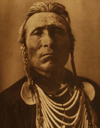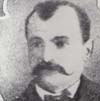John Stuart Stuart-Forbes was born on May 28, 1849, in Rugby, England. He was a Private with Company E who was killed with Custer’s Column. Although the reason is not clear, it is said he left the United Kingdom to avoid scandal and moved to the United States in 1870. He enlisted in the U.S. Army in 1872 under the name John S. Hiley, using his married sister’s surname. After he was killed, Army officers found a letter from his mother stating that his troubles had been resolved and that “he could then return home without molestation.”
Charles Theodore Wiedman was born in Boston, Massachusetts, on May 28, 1856. He was a Private in Company M who participated in the valley and hilltop fights, during which he was wounded.
William G. Abrams died in Sioux City, Iowa, on May 28, 1901, and was buried in Floyd Cemetery there. He was a Private with Company L who was with the pack train and in the hilltop fight.
Thomas Russell died in Letterman Hospital at the Presidio in San Francisco, California, on May 28, 1926, and was buried in the National Cemetery there. He was a Sergeant in Company D who participated in the hilltop fight.
May 29 – On this day we observe Memorial Day in the United States to commemorate American military personnel who died in all wars.
William Winer Cooke (left) was born on May 29, 1846, in Mt. Pleasant, Ontario, Canada. He was a First Lieutenant who served as the Regimental Adjutant. He was killed with Custer’s Column.
Winfield Scott Edgerly (right) was born in Farmington, New Hampshire, on May 29, 1846. He was a Second Lieutenant in Company L who participated in scouting duty and in the hilltop fight.
May 30, 1876 – George Custer, Tom Custer, and Companies C, D, F & M scouted the Little Missouri River.
Henry Jackson (left) was born on May 31, 1837, in Canterbury, England. He was a First Lieutenant in Company F who was not present at the battle due to detached service in Washington, D.C., at the Office of the Chief Signal Officer.
John J. “Jack” Mahoney (right) was born in Cork, Ireland, on May 31, 1845. He was a Private in Company C who was with the pack train and participated in the hilltop fight.
Goes Ahead (left) died at the Crow Agency in Montana on May 31, 1919, and was buried in the Custer National Cemetery there. He was a Scout who rode with Custer’s Column and participated in the hilltop fight.
Otto Emil Voit (right) died on June 1, 1906, in Louisville, Kentucky, and was buried in Saint Stephens Cemetery there. He was a saddler for Company H who was wounded in the hilltop fight. He was awarded the Medal of Honor for his actions. On December 29, 1890, he participated in the battle at Wounded Knee in Shannon, South Dakota.
John A. Bailey died in St. Paul, Minnesota, on June 2, 1915, in an elevator accident. He was buried in the Fort Snelling National Cemetery in Minneapolis, Minnesota. He was a saddler for Company B who was with the pack train and participated in the hilltop fight.
White Man Runs Him (left) died at Lodge Grass, Montana, on June 2, 1929, and was buried in Custer National Cemetery on the Crow Agency in Montana. He was a Scout who was with Custer’s Column and in the hilltop fight.
Charles Ramsey was a Private in Company I who was with the pack train and in the hilltop fight. He deserted from Fort Abraham Lincoln, Dakota Territory, on June 3, 1879.
Henry Melanchton Krusee (gravestone has Harry M. Krusee) died on June 3, 1925, in Hot Springs, South Dakota, and was buried in the National Cemetery there. He was a Private in Company G who was not present at the battle due to detached service at Powder River. See also 7th Cavalry Troopers in South Dakota.
